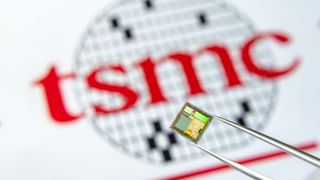How do you know YMTC isn't buying used tools that are also depreciated for the I/O wafer? Or using Xtacking so they can at least partially outsource the I/O wafer while keeping their array wafer and the bonding process in house? This way they can leverage foundry capability rather than have to build everything themselves.This is not even the right way to compare their business' competitiveness. Yes on the surface it sure look like YMTC is more advanced. Typically, better memory density = better cost function. But this is not the case here.
Memory chips are commodities and very cost sensitive. The desire to towards lower cost/performance is what drives the transition from one node to the next (more cost effective) node.
Going to the next node where bit density is higher will provide lower cost function per bit (byte) of memory. Time-to-market, yield, operational efficiency, are also important factors. So comparing YMTC 128L to Micron 128L physical attributes are pointless.
Real comparison look something like this:
- when YMTC is producing 128L, Micron is on the more cost effective 176L node
- YMTC volume is still just a fraction of Micron's. Operation cost for larger volume is usually more cost effective
- YMTC makes their chips with new equipments. Micron makes theirs with mostly fully depreciated systems.
- YMTC buys new tools that are overkill for their current needs. Micron use old systems ("recycled") from their old DRAM process
- YMTC uses the less cost effective Xtacking (marketed to be better technically because it provides better memory density), Micron still uses the CUA (CMOS under array approach). But does the ~1mm reduction in size in x & y direction improvement from Xtacking really a big deal? It's not. This is why no one is going with that approach yet. There is no technical barrier for everyone to go to "Xtacking". people chose not to do so because they could obtain similar bit density with CUA and still have good yield.
All of the above points to a higher Cost-of-business line item on YMTC's income statement as well as a lower gross margin than their peers. So where is YMTC's advantage over their competition? The name of the game in the memory segment is who makes more money.
So, you declaring Micron is not competitive compare to YMTC is just plain incorrect.
YMTC is the new kid on the block. We are trying to build ourselves up first, then we will need to improve the technical & operational efficiency to sustain a healthy competitive business model from Profit/Loss standpoint. While YMTC is still in the growth phase, let's not kid ourselves and falsely hype it to be something that its not (yet).
I didn't declare Micron as uncompetitive, I said it may be hard for them to recover market share. And it will be. Any market share they have lost to YMTC is during a boom in the market. YMTC is unlikely to lose market share even in a downturn because their demand is not solely price driven but security driven. With lower Micron market share, more companies are likely to sample YMTC products and find them useful, and the security minded among them might change suppliers permanently.
It's very possible for a new company to have cost and operational advantage over a complacent competitor coasting on momentum and monopoly status. It is also possible for a new company with a specific selling point that others can't match - national security - to have a superior value proposition.

